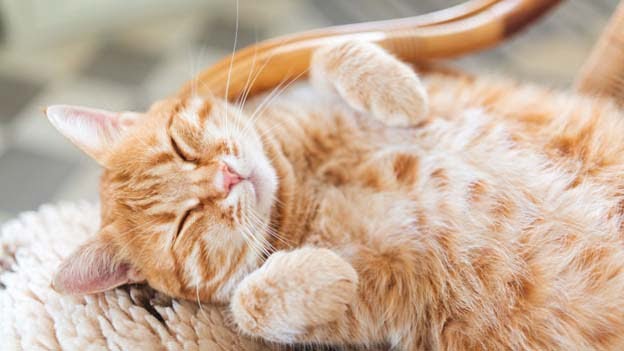A Turramurra Vet Article
What is My Cat Trying to Tell Me?

What is My Cat Trying to Tell Me?
Did you know, according to the Animal Medicines Australia survey, approximately 27% of Australian households own cats, with 41% of people having owned one in the past? With an average of 1.4 cats per family, it makes sense that they are the 2nd most popular species of pet. And that it is no wonder! As many of our clients are aware, cats can make perfect family members and companions.
Humans will mostly talk or write to express thoughts and emotions, but our cats and kittens will express themselves through body language using their ears, tail, eyes, body posture, as well as certain vocalisations. Types of emotions and behaviours that cats portray- but are not limited to- are contentedness and relaxation, fear or anxiety, play or pain.
Relaxed Body Language
When relaxed cats will have their ears in a neutral position, or forward if alert and attentive. Their tails will be relaxed, with the tip moving minimally. When our cats are exhibiting these behaviours, we know they are experiencing positive thoughts and feelings. Other examples include:
- Sitting of lying down with minimal body tension
- Rolling on back comfortably and exposing tummy (a sign of trust as cats with often hide tummy if feeling fearful)
- Eyes half closed, blinking slowly, casual gazing or closed as if sleeping
- Grooming body calmly
- Purring
- Kneading (otherwise known as “making biscuits”)
- Rubbing against people and other things
 This is a very happy cat! It is lying with its tummy exposed, with minimal body tension, and its eyes closed as if sleeping.
This is a very happy cat! It is lying with its tummy exposed, with minimal body tension, and its eyes closed as if sleeping.
Play
Having time to show natural, positive instincts such as play, is vital for your cat’s enrichment. Play is a fun pastime that will ensure your feline friend is feeling emotionally and physically enhanced. Just make sure your furniture is protected if they decide they want to use your lounge as a scratching pole!
Behavioural signs of a cat wanting to play:
- Ears forward
- Tail pointed up
- Whiskers forward
- Tail twitching
- Predatory/hunting behaviour such as stalking, pouncing, swiping, or biting
 This playful cat’s whiskers and ears are facing forward, in a predatory crouched position as it readies itself to pounce!
This playful cat’s whiskers and ears are facing forward, in a predatory crouched position as it readies itself to pounce!
Fearful or Anxious Body Language
Depending on your cat’s personality, fear and anxiety will often materialize in diverse ways, such as avoidance (moving away or hiding from the perceived threat) or repulsion (attempting to ‘get rid’ of the perceived threat). As cat owners, It is important to understand our cat’s body language in order to tell when something may be upsetting them.
Avoidance responses:
- Freezing (especially if cornered, confined, or unable to escape)
- Fleeing, especially when startled
- Trembling
- Tense muscles
- Ears turned back, furrowed brows
- Standing tall with hair standing on end in attempt to appear bigger
- Tail held tightly to body
Repulsion responses:
- Hissing
- Growling
- Scratching
- Biting
- Directly and intensely staring at source of anxiety
- Ears flattened to head and out to side
- Using body to physically block (for example, standing between food bowl if concerned for that resource)
 An example of a cat showing a repulsed response: hissing, crouched flat to the floor, with its ears out to the side
An example of a cat showing a repulsed response: hissing, crouched flat to the floor, with its ears out to the side
Pain
When humans are in pain, one of our first instincts is to tell someone or to get help. Our cats don’t have that luxury, so it is up to us as owners to recognise pain signs in cats. If you notice your cat is in pain, a veterinary consultation is recommended.
Cats will show they are in pain by:
- Limping
- Becoming withdrawn or quiet
- Ears back
- Pupils dilated
- A change in regular behaviour
- Squinted eyes
- Hunched back
- Absence of grooming behaviours
One of the best things you can do for your cat is take the time to understand them. If you notice your cat exhibiting out of character or frequent negative emotions, a veterinary health and behaviour consultation is always an option here at Turramurra Veterinary Hospital if you are concerned. Give our helpful Customer Care team a call to book with one of our veterinarians on 9988 0198 or go to www.turramurravet.com.au to book online.


